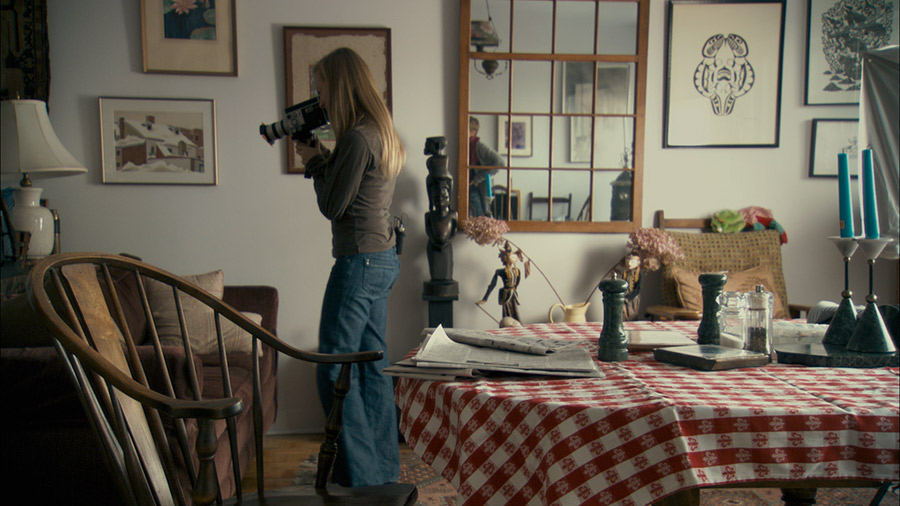"Stories We Tell" is about Sarah Polley's family, mainly concentrating on their mother and father's relationship. My favourite piece of information that I found out about this documentary is that Sarah doesn't call her interviewees, interviewees; she calls them "storytellers" and in all honesty, I had never thought about this until now, and it's absolutely true. If something happened and you ask five people what happened; you're more than likely going to get a alternative version of the situation, you will never get the one hundred percent truth to what happened because it always have a little differently depending on each person. So the same can be said for any type of family situations, including the ones Sarah's family talk about in the film. The same names are mentioned and certain situations are talked about but with a slight variation.
(A shot taken from the set of Sarah setting up for her interviews with her family)
As I mentioned earlier in the post, I was blown away by her interview techniques especially. The beginning of the film shows Sarah setting up her interviews, and this shows how nervous her family members are. Normally in anything, be it documentary or television show, we never normally see the beginning before the beginning of the interview. Sarah sits behind the camera and you can hear her ask the questions in the film, but most interview tend to take out their questions and have the questions be told in such a way that it is asked through the videos and photographs on screen. Although this use of question asking is quite visual, it's always refreshing to hear the question from the director or interviewer themselves. What I found extraordinary, was when her family sat down, Sarah asked them to essentially tell their full life story and they were surprised that they would have to tell the entire story, but they didn't seem to know this before the interview.
We see boom mics, the setting up of the camera, the storytellers are sitting down and everything they said from the moment they sit down, is all recorded. As well as the interviews, some of the home footage shots are actually dramatized and grains are added to give the impression that these shots are old footage. An example of this is shown below, and it is very well done, because until I researched this film further, I didn't pick up on the dramatization at all. The footage of Michael (Sarah's non-biological father) being told that he isn't her biological father, you can tell that it has been dramatized, but the older looking footage is harder to recognize.
(One of the dramatized shots made to look like home footage)
I was also fascinated by some of the interview environments and the shots used throughout the film. With the interviews, the home environment was used for the majority of them along with shots of her father recording their story in the recording studio, as Sarah sits on the other side of the booth listening in and adjusting his levels. The recording that her father does is used throughout the film to put over footage or photographs, when the interviews with her family aren't being shown.


No comments:
Post a Comment